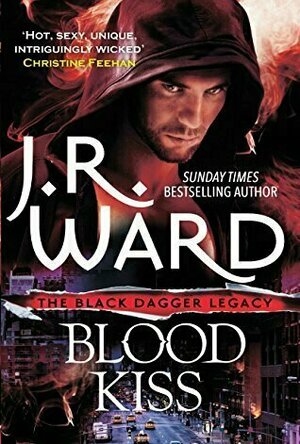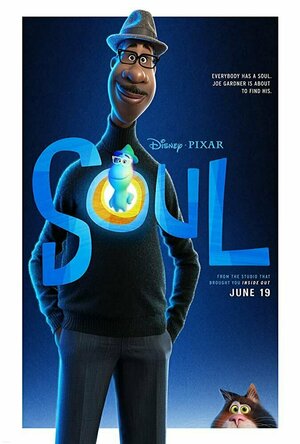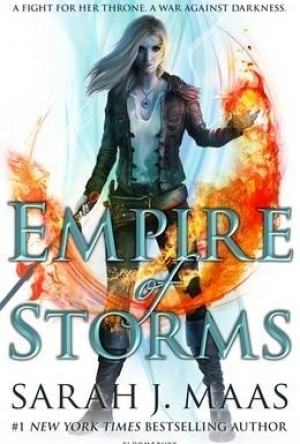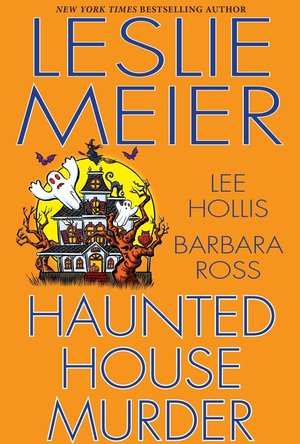Search
Search results
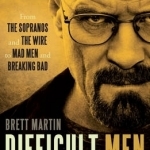
Difficult Men: From The Sopranos and The Wire to Mad Men and Breaking Bad
Book
In the late 1990s and early 2000s, a wave of TV shows, first on premium cable channels like HBO and...
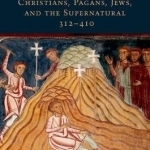
A Century of Miracles: Christians, Pagans, Jews, and the Supernatural, 312-410
Book
The fourth century of our common era began and ended with a miracle. Traditionally, in the year 312,...
Leanne Crabtree (480 KP) rated Blood Kiss (Black Dagger Legacy, #1) in Books
Jan 7, 2021
I read my first Black Dagger Brotherhood book back in 2010, I think, and fell in love with this group of warriors. I have books 1-12 in paperback and they sit proudly on my bookshelf, as shown below
I guess it's not fair to have favourites but two of them always stick in my head: Rhage and Vishous, though all the guys are memorable. The King, Wrath's second book in the series took me a while to read so I gave up on the series for a while, though I have been buying the rest of the books in this series as Kindle books.
This spin off series - Black Dagger Legacy - is about the original guys finding new recruits who they will train so they can help them take on the lessers and any other threats to their population.
This one follows Paradise, a society heir who wants more from her life than parties so she fills in an application form and hopes her father will give her permission to join the programme and he does, believing she won't make it very far. Paradise proves everyone wrong, though, including Craeg - fellow trainee and the guy she has an intense attraction towards. And the feeling is definitely mutual.
I enjoyed watching this play out, although Craeg's reluctance to start with annoyed me a little. But Paradise certainly wore him down in the end and it was fun watching.
It also focuses on Butch and Marissa's relationship. Both are dealing - or more precisely NOT dealing - with issues from their pasts and it's starting to drive a wedge between them. Then there's the battered female that comes into Safe Place - where Marissa works - on the brink of death that brings up old memories.
I did enjoy seeing a lot of the brothers again, it reminded me why I love this series and I can't wait to read more. I think The Shadows will be my next read.
I guess it's not fair to have favourites but two of them always stick in my head: Rhage and Vishous, though all the guys are memorable. The King, Wrath's second book in the series took me a while to read so I gave up on the series for a while, though I have been buying the rest of the books in this series as Kindle books.
This spin off series - Black Dagger Legacy - is about the original guys finding new recruits who they will train so they can help them take on the lessers and any other threats to their population.
This one follows Paradise, a society heir who wants more from her life than parties so she fills in an application form and hopes her father will give her permission to join the programme and he does, believing she won't make it very far. Paradise proves everyone wrong, though, including Craeg - fellow trainee and the guy she has an intense attraction towards. And the feeling is definitely mutual.
I enjoyed watching this play out, although Craeg's reluctance to start with annoyed me a little. But Paradise certainly wore him down in the end and it was fun watching.
It also focuses on Butch and Marissa's relationship. Both are dealing - or more precisely NOT dealing - with issues from their pasts and it's starting to drive a wedge between them. Then there's the battered female that comes into Safe Place - where Marissa works - on the brink of death that brings up old memories.
I did enjoy seeing a lot of the brothers again, it reminded me why I love this series and I can't wait to read more. I think The Shadows will be my next read.
ClareR (6054 KP) rated City of Vengeance in Books
Mar 30, 2021
City of Vengeance is set in 16th century Florence during the Renaissance, a time when cities in Italy were run by Dukes. Florence’s Duke was Alessandro de’ Medici.
Cesare Aldo is an officer of the criminal court and a former soldier, and when we first meet him, he is riding home to Florence from Bologna with the Jewish moneylender he’s protecting. This is where we learn just how good Also is at this part of his job. His charge reaches his home safely, despite an encounter with bandits.
Thinking he has finished his job well, Also leaves the moneylender at his home and thinks nothing more of it - until the moneylender is murdered.
Also is tasked with finding the murderer within four days, which seems impossible. Especially when you factor in all the trouble that Aldo manages to get himself in to!
Meanwhile another constable of the criminal court, Strocchi, is investigating the death of a young man. The only problem, is that he was murdered whilst wearing a dress, and homosexuality is illegal. Finding his murderer isn’t high on the courts list of priorities - in fact, there are those who work there who believe that he has got exactly what he deserves.
There’s loads of mystery and intrigue in this book, as well as heaps of historical detail. It’s fast-paced and totally unputdownable. It shows the seedier, more difficult side of life at this time, especially when we get a look in to La Stinche - a notorious prison hellhole.
Both Also and Strocchi are characters that I’m looking forward to finding out more about - especially Aldo. There’s a lot more to him than we see in this, what I hope is, the first of a series (I’m totally guessing here - but it’s not a terrible idea!).
Many thanks to Pan Macmillan for providing me with an e-copy of this book to read and review through NetGalley.
Cesare Aldo is an officer of the criminal court and a former soldier, and when we first meet him, he is riding home to Florence from Bologna with the Jewish moneylender he’s protecting. This is where we learn just how good Also is at this part of his job. His charge reaches his home safely, despite an encounter with bandits.
Thinking he has finished his job well, Also leaves the moneylender at his home and thinks nothing more of it - until the moneylender is murdered.
Also is tasked with finding the murderer within four days, which seems impossible. Especially when you factor in all the trouble that Aldo manages to get himself in to!
Meanwhile another constable of the criminal court, Strocchi, is investigating the death of a young man. The only problem, is that he was murdered whilst wearing a dress, and homosexuality is illegal. Finding his murderer isn’t high on the courts list of priorities - in fact, there are those who work there who believe that he has got exactly what he deserves.
There’s loads of mystery and intrigue in this book, as well as heaps of historical detail. It’s fast-paced and totally unputdownable. It shows the seedier, more difficult side of life at this time, especially when we get a look in to La Stinche - a notorious prison hellhole.
Both Also and Strocchi are characters that I’m looking forward to finding out more about - especially Aldo. There’s a lot more to him than we see in this, what I hope is, the first of a series (I’m totally guessing here - but it’s not a terrible idea!).
Many thanks to Pan Macmillan for providing me with an e-copy of this book to read and review through NetGalley.
Lenard (726 KP) rated Soul (2020) in Movies
Dec 26, 2020
There is a saying that even though you can't achieve greatness you can still inspire someone else to be great. Joe Gardner is a sometime jazz pianist who works as a part time middle school band teacher. On the day the principal hires him as a full-time teacher with all the benefits, Joe is invited to join a jazz quartet for their nightly club gigs. In his dazed excitement, he falls down an open manhole (the city will face a major lawsuit for that). His soul is transported onto the conveyor belt for the Great Beyond, but Joe escapes into the Great Before. There, in order to stall his forever death, he becomes a mentor to a "new" soul so that the nonbinary entity named 22 finds a spark to live. 22 has been mentored by all the greats from Archimedes to Copernicus to Mother Teresa never finding a reason to exist. That is, until a trip to the land of the lost souls ends with both Joe's soul and 22 inside corporeal beings. Joe teaches 22 that life has value whether it is a pursuit of music, a dream deferred like a raisin in the sun, or observing a leaf falling from a tree. In fact, Joe has influenced the lives of many of his students, like Curley, a jazz drummer in the Dorothea William Quartet, or current student Sonia, a master trombonist, who he privately teaches outside of school. While some people can see his dreams may not be his meal ticket, Joe will always be a mentor to other struggling musicians who may one day be successful.
On the technical aspects of the film, there is a lot to praise. While a Michael Giacchino score may have worked, the score by Trent Reznor and Atticus Ross counterposes the jazz score throughout. Music soothes all souls. The animation is masterful as usual. The "Terry" sequence and some of the character designs in the afterlife will influence future animators much like Joe's students.
On the technical aspects of the film, there is a lot to praise. While a Michael Giacchino score may have worked, the score by Trent Reznor and Atticus Ross counterposes the jazz score throughout. Music soothes all souls. The animation is masterful as usual. The "Terry" sequence and some of the character designs in the afterlife will influence future animators much like Joe's students.
Kristina (502 KP) rated Empire of Storms in Books
Dec 7, 2020
What?! What?! I can’t even… I’m literally speechless. How in the world do I try to explain how amazing, how intricate, how mind-blowingly shocking this part of the series is? There are no words. There is no way to adequately explain it – any attempt would be a vast understatement, the book being so overwhelming, no explanation could ever amount to its greatness. I began this series fully aware that it was unfinished, that the final book had yet to be released, but I became intrigued at my sister’s recommendation. So, I chose to begin reading, still unsure of whether I’d even enjoy the story, and very quickly became enthralled with the plot, with the characters, with the mystery. My love grew stronger with each book, even if I didn’t truly care for Assassin’s Blade as much as the rest, and my love turned into infatuation. More characters were introduced, more for to care about and hope would survive the unavoidable bloodbath I know will be coming their way. Each encounter with the Valg, each life and death situation, with every drop of blood that spilled, I held my breath in anticipation of preparing for the worst. Then that ending. The one that made me stick my tongue out at all the people who doubted Aelin and her strength, wisdom, and courage, that ending that made me pray for a thousand more pages; that ending that left me staring at my wall in total and utter desolation. What have I done, by reading this when the last part is so far off from being published? Why have I tortured myself in such a way? My only answer: I love a good story and I couldn’t stay away from this one, finished or not, once I got started. Also, apparently, I’m a masochist and enjoy torturing myself, because that is what it will be as I await the final chapter of Aelin’s destiny: pure torture.
Mark @ Carstairs Considers (2464 KP) rated Haunted House Murder in Books
Aug 30, 2019
Cozy Halloween Hauntings
This collection of three novellas focuses on Halloween. The book opens with the title story featuring Leslie Meier’s protagonist Lucy Stone. A couple has moved into the old abandoned house in town, but they are rebuffing efforts from Lucy and others to welcome them to town. Then strange things start happening and rumors start flying. What is happening? Up next is “Death by Haunted House” by Lee Hollis which takes up back to 2009 and shows us what life was like for Hayley Powell while she was married. When the house next door, which is rumored to be haunted, gets a new family, Hayley’s husband Danny is certain that they are up to something. The discovery of a dead body in the nearby woods just confirms his theory – at least to himself. Is he right? Finally comes “Hallowed Out” from Barbara Ross. The local Haunted House tour is gearing up for Halloween, trying to bring some more people to town in the fall. However, when a reenactment of a crime leaves an actor dead, Julia Snowden must figure out what happened.
As you might expect in a collection of stories by various authors, some are stronger than others. Personally, I found the opening story to be the weakest – I think it might have worked as a short story, but even as a novella is was too long. The middle story was better, with some fun scenes and a good twist to the mystery. I adore Barbara Ross’s Maine Clambake mysteries, so it was the reason I picked up the book. It also means I found the third story to be the best, with some good twists and a very fun sub-plot. While each story has plenty of fall atmosphere, these stories aren’t that spooky – they are by cozy mystery authors after all. Still, fans of these authors will enjoy picking up the book.
As you might expect in a collection of stories by various authors, some are stronger than others. Personally, I found the opening story to be the weakest – I think it might have worked as a short story, but even as a novella is was too long. The middle story was better, with some fun scenes and a good twist to the mystery. I adore Barbara Ross’s Maine Clambake mysteries, so it was the reason I picked up the book. It also means I found the third story to be the best, with some good twists and a very fun sub-plot. While each story has plenty of fall atmosphere, these stories aren’t that spooky – they are by cozy mystery authors after all. Still, fans of these authors will enjoy picking up the book.
Heather Cranmer (2721 KP) created a post
Aug 15, 2020 (Updated Aug 15, 2020)
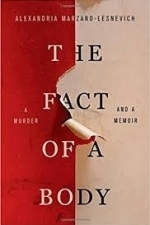
The Fact of A Body
Book
A young law student, an unspeakable crime, and a past that refuses to stay buried. Before...
Biography memoir true crime
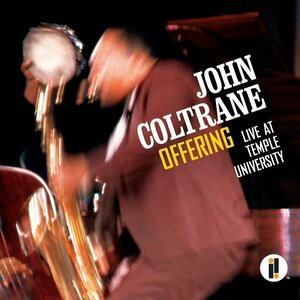
Offering: Live At Temple University by John Coltrane
Album
'Offering: Live At Temple University' documents a legendary concert by John Coltrane at Temple...
